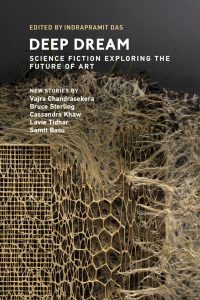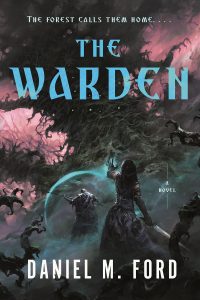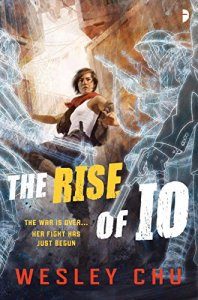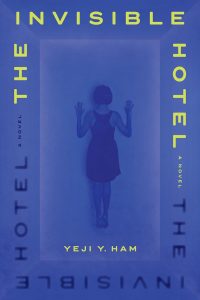Deep Dream: Science Fiction Exploring the Future of Art edited by Indrapramit Das: Review by Niall Harrison
 Deep Dream: Science Fiction Exploring the Future of Art, Indrapramit Das, ed. (The MIT Press 978-0-26254-908-0, 229pp, $24.95, tp). October 2024. Cover art by Diana Scherer.
Deep Dream: Science Fiction Exploring the Future of Art, Indrapramit Das, ed. (The MIT Press 978-0-26254-908-0, 229pp, $24.95, tp). October 2024. Cover art by Diana Scherer.
Of the ten stories collected in Deep Dream that aim to, as editor Indrapramit Das has it, “both embody and visualize the future of art,” only one offers an explicit definition of what art might be. Many millennia in the future, the twinned artificial intelligences Blombos-7090 and Blombos-4020, embodied in a ship the size of a small moon, travel the universe as artists for hire: In the opening scene they are commissioned by a stagnating world to create a great work that will inspire and re-energise their culture. Guiding the interactions of three microscopic black holes – “a precise action like the first brush of paint hitting a canvas” – they create a frozen singularity hanging in their client’s sky, a recreation, with “some creative liberties,” of the first few seconds of the existence of the universe. The client species is awed and moved, both at the level of individual bodies and at the level of their collective consciousness. The work meets the definition of art that Blombos-7090 and Blombos-4020 later offer – “any creative manipulation of the way the universe is experienced for nonfunctional purpose by one consciousness for the benefit of another” – and as both embodiment and visualization, for me it ticked both of Das’s boxes, as well.
The story is “Encore” by Wole Talabi, the only piece I’ve read by him to inhabit such a vaulting space-operatic setting, and what I like most about the scene is the way it so thoroughly decentres humanity. For an exhilarating moment, towards the end of an anthology which, not unreasonably given its topic, spends a lot of time extolling the uniqueness of humanity’s insights, it seemed we were getting a reminder that it might not always just be us. So I confess I was a little disappointed by the second half of the story, in which the AIs receive a new commission, which reveals their origins as a tool of humanity – their drive to seek clients and create art literally coded into them – and slingshots them into a humanocentric new life. It is as smoothly executed as the opening, but more familiar.
A different kind of familiarity seemed to me to inhibit a few of the other stories. Samit Basu’s “The Art Crowd” is set in the world of his novel Chosen Spirits/The City Inside; Aliette de Bodard’s “Autumn’s Red Bird” in her Xuya universe; and Lavie Tidhar’s “The Quietude” in his Central Station continuity. Constraints can be good for art, but something about the application of pre-existing parameters to this particular subject matter felt numbing, as though the stories had started from the question, “what is the place of art within this imagined world,” rather than “what is the potential of art within our actual world.” Of the three, De Bodard’s worked best for me: It describes the work of a “data artist” who shares recreations of her wartime experiences with one of the setting’s ubiquitous mindships, allowing them both to grieve and accept their losses. Basu and Tidhar’s stories, near-future and further-future cyberpunk respectively, offer similar comments. In the Basu, a wealthy client is framed as politically and aesthetically denatured when she opines that “art is to be experienced, not understood.” In the Tidhar, a disparate group are connected through a form of artwork; one of them concludes, in almost the last lines of the book, “Something had changed. But he didn’t know what it was,” but then crucially, sets out in search of understanding. It’s nice to find endorsement of the critical impulse, at least.
More idiosyncratic and compelling are Bruce Sterling’s “Immortal Beauty” and Sloane Leong’s “No Future But Infinity Itself”. The former archly narrates a superficially technomedieval but actually postsingularity future Europe in which the protagonist moves through various communities, falls in love, marvels at a theatre that is all arts at once, experiences politics as an artform, the list goes on: In this future, art is everything by other means, art is simply life. The latter extrapolates and cross-fertilises Indigenous art and nuclear semiotics (or some related discipline of future-warning) into an intriguing, sometimes enigmatic tale. At a time when tarmac roads are crumbling and buildings reduced to girder bones, a man works on a sculpture that warns of poison; his family has guarded and enhanced the statue for generations to keep it fresh, to restore the shock of it. It matters, he realises, who makes the art: There has to be trust in the maker. A similar extrapolation of current practice is to be found in Cassandra Khaw’s meditative “Immortal is the Heart”, one of my favourites in the book. In another collapsed US future, the protagonist is a Starik, after Frank Starik, a poet notable for his eulogies of the unknown; now the task is to memorialise entire towns and communities. Some scenes stray closer to saccharine folksiness than I would have preferred, but in the end this is a piece that honours the mourning tradition that Starik represents. I can’t say the same of (Egyptian artist/activist) Ganzeer’s “Unauthorized (Or, the Liberated Collectors Commune)”, a dystopia which seemed to go beyond satire into glibness with (contra Basu and Tidhar) no particular drive towards understanding the effects of its art.
I’ve been working my way roughly backwards through the collection, which, as it happens, means travelling closer to the present as we go. For all that AI is a recurring presence in the stories discussed above, such anthropomorphized, metaphorized representations may be good for certain types of story, but as Jo Lindsay Walton has recently argued in SFRA Review, they tell us little about the actually existing “AI” landscape of generative text and image tools, which you’d hope is something science fiction writers would want to address. The two remaining tales fill the gap. In Lavanya Lakshminarayan’s “Halfway to Hope”, international regulation has been achieved; users must agree to take responsibility for the work produced through the use of such tools (a little like existing guidelines on scientific academic authorship); and the tools are generally limited to a few specific use cases, such as the one the story is actually about, the creation of simulations to help patients process traumas and chronic conditions. It’s a thoughtful vision that stands out against the darker settings found in much of the rest of the book.
And then there was one, but what a one. Vajra Chandrasekera’s stories are often critical fictions, and “The Limner Wrings His Hands” is explicitly so, identifying itself as poioumenonal: As a metafiction in which the story is about the process of creation. Not only because the deployment of that word had me reaching for a dictionary do I find myself reaching for comparison to a critic to communicate the nature of the reading experience here. The prose of “Limner” is characterised by a daunting density of thought, a freewheeling breadth of reference, and a gleefully disruptive attitude to language and narrative: I mean it as praise when I say that it reminded me of reading John Clute, although I might add that in its uncompromising stringency, if not its method, it also recalls M. John Harrison. In its totality “Limner” is both demonstration and analysis of a type of creation that it believes large language models will never do. Its varied intellectual riffs are studded with specific vivid images (“twenty-five monks come to his place of works, their wizard robes hiked up aggressively, their hairy thighs quivering in rage”), and all of them are in service of a larger argument: Art must not defer to power (and outsourcing creativity to generative tools would be a deferment), because power always recognises the threat that can be posed by art. But that’s too neat: There is so much more that could be said. I had to finish this review with “Limner”, because it comes first in Deep Dream, and if I’d taken the stories in order I might not have got any further within my wordcount.
Interested in this title? Your purchase through the links below brings us a small amount of affiliate income and helps us keep doing all the reviews you love to read!
In Niall Harrison‘s spare time, he writes reviews and essays about sf. He is a former editor of Vector (2006-2010) and Strange Horizons (2010-2017), as well as a former Arthur C. Clarke Award judge and various other things.
 This review and more like it in the October 2024 issue of Locus.
This review and more like it in the October 2024 issue of Locus.
While you are here, please take a moment to support Locus with a one-time or recurring donation. We rely on reader donations to keep the magazine and site going, and would like to keep the site paywall free, but WE NEED YOUR FINANCIAL SUPPORT to continue quality coverage of the science fiction and fantasy field.
©Locus Magazine. Copyrighted material may not be republished without permission of LSFF.









